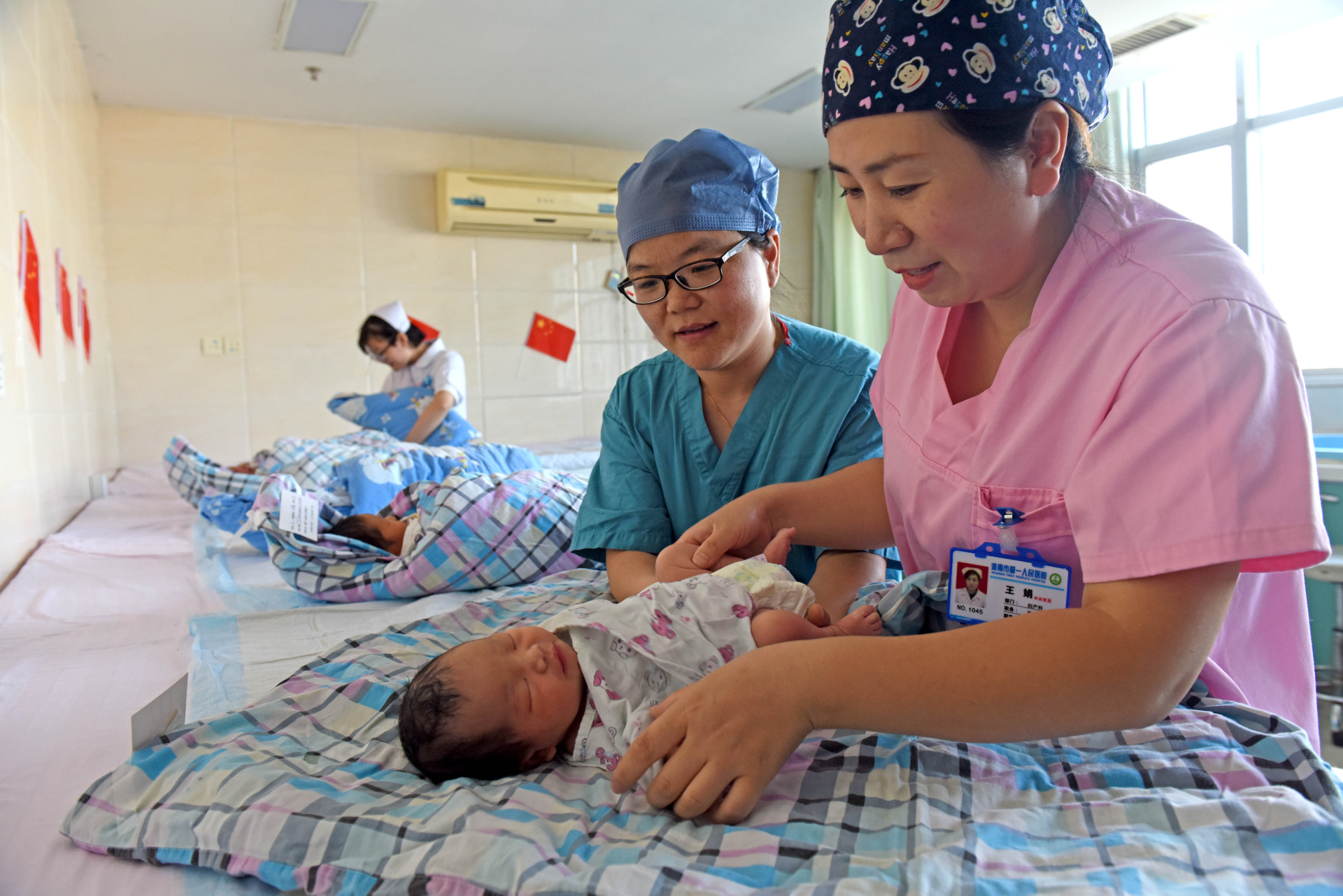China’s birth rate drops to levels not seen since 1978. Experts say the worst is yet to come.
Despite Beijing's efforts to alleviate a baby bust, Chinese people stubbornly seem to want fewer marriages and fewer babies. The gravity of the situation is starkly illustrated in China’s latest statistical yearbook.

China is hardly the only country with worries about population stagnation — birth rates are falling in nearly every industrialized country in the world, causing researchers to sound the alarm on the likelihood of global depopulation in the not-so-distant future.
China, though, has faced a significantly more dramatic demographic bust than most countries. Thanks to a combination of decades-long family-planning policies and changing social attitudes about family and marriage, especially among the younger generation, China’s birth rates have been in steady decline since 2017.
To fix the baby bust, China has introduced a wide array of policies, such as housing subsidies for new families, longer parental leave for both mothers and fathers, and — perhaps most importantly — relaxation of birth limits.
But people stubbornly seem to want fewer marriages and fewer babies. The gravity of the situation is starkly illustrated in China’s latest statistical yearbook (in Chinese). Released last week by the National Bureau of Statistics, the annual publication involved a collection of figures from 2020 that comprehensively reflected the economic and social development of the country.
Below are two crucial takeaways from the document.
Birth rate at a new low since 1978
China’s birth rate — measured by the ratio between the number of newborns in a year and the average total population of that year — fell for a fourth consecutive year in 2020, making a new low in over four decades. There were 8.52 births for every 1,000 citizens in the country last year, with the number dropping below 10 for the first time in China’s history.
Meanwhile, China’s rate of natural increase, defined as the birth rate minus the death rate of a particular population, was 1.45 per 1,000 people in 2020, also a new low in 43 years.
The findings in the yearbook are largely consistent with China’s seventh census data released in May, which recorded the new births of 12 million babies last year, the lowest of any year since 1961. The two documents both noted a major shift in China’s demographic structure, with people aged 65 and over accounting for 13.5% of the entire population and the working age population, defined as those aged 15 to 64 years, shrinking by nearly 27 million between 2019 and 2020.
Early in the pandemic, there was speculation that the widespread lockdowns, which confined millions of Chinese people to their homes, would lead to a recovery in the birth rate. But as the numbers indicated, the major changes in the life of Chinese people have had the opposite effect.
In explaining the COVID-related “baby bust,” Zhāng Cuìlíng 张翠玲, a senior researcher at the China Population and Development Research Center, a government institute in Beijing, said in a press briefing back in May that while there was likely a minor increase in unplanned pregnancies as many couples spent long periods of time at home during the pandemic, a host of factors — including financial insecurity, anxiety and stress, and general uncertainty about the future — had made many people postpone or cancel their plans of forming families.
Earlier this year, Andy Rothman, an investment strategist with Matthews Asia, wrote that “China won’t be roughly as old as Japan is today until 2050.” But the aging population, coupled with a continuous drop in birth rates, have had China on track to experiencing a negative population growth at some point, according to Lù Jiéhuá 陆杰华, a professor of demographics at Peking University. He noted that if the number of newborns fall below 10 million in 2021, deaths in the country will likely outnumber births for the first time next year, marking the beginning of a new era with sweeping ramifications.
The end of marriage in China?
In 2020, marriage registrations in China plunged for the seventh year in a row, with only 8.1 million couples tying the knot — a 12% drop from the previous year and a super-steep drop from the 13.4 million couples who got married in 2013. The figures mirrored a survey (in Chinese) conducted in October by China’s Communist Youth League. By polling 2,905 unmarried youths living in Chinese cities between the ages of 18 and 26 about their attitudes toward relationships and matrimony, the survey found that 44% of its female respondents did not intend to get married, with a sizable 25% of its male respondents saying the same.
As for why these young adults in China don’t want to get hitched, about 35% of the participants cited “a lack of time and energy.” And while some said they were delaying marriage due to financial reasons, others declared that they were forgoing it altogether, as they no longer saw marriage as a life goal.
Meanwhile, only 4.3 million couples got divorced in 2020, down from 4.7 million in the previous year. This may seem like promising news. But in practice, the number does not mean more people are living happily ever after, given that the drop in divorce statistics is in large part due to China’s newly implemented divorce law, which requires couples to take part in a 30-day “cooling off” period before officially calling it quits. While it’s possible that some couples changed their minds during the period, a few media reports revealed that the process had become so complex that some couples had trouble booking divorce appointments at their local civil affairs bureaus.
Too many men in the countryside
Although China’s overall gender ratio at birth is more balanced than ever, with the number hitting a record low of 105.07, meaning about 105 men for every 100 women, in 2020, the disparity is still severe in rural areas, where there’s a wide preference for sons and gender-selective abortions are less strictly regulated.
A direct result of the skewed sex ratio is a massive surplus of bachelors in China’s rural areas, who are seen by the central government as an unstable, dangerous factor in society because of the financial, social, and sexual frustration they suffer from. Looking for a solution, an economist once suggested that single women in cities should pair up with bachelors from the countryside, despite vast differences in social and economic backgrounds. Last month, a county in Hunan Province made a plan to encourage local women to stay in the village and look for love amongst its many bachelors. But these ideas were met with intense backlash from the public, which denounced the proposals as selfish and at the expense of women’s interest.






